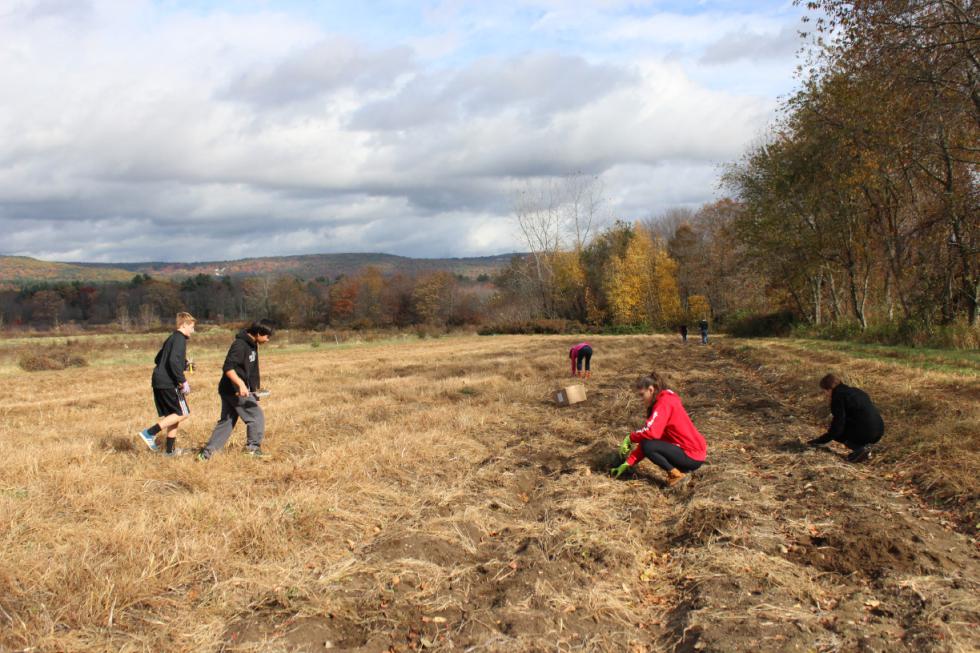AMANDA DRANE PHOTO
A third of all the food that’s produced in the U.S. goes to waste, Jessica Harwood tells the 14 young gleaning helpers at Atkins Farm.
Standing in a circle on a mild mid-afternoon, the children take turns offering up first names and their thoughts on why so much food goes
to waste.
“People are too picky about what they eat,” one chimes in.
“People take it for granted,” says another. “They only want the best of
the best.”
Harwood tells the group that farmers often plant extra to ensure farm members get their fair share, which means — like today — there’s more here in the fields than what they could sell. In many other cases, Harwood says, food is left on the vine because of a physical defect that renders it too ugly for purchase. In both cases, Harwood says, it’s not economically feasible for farm staff to spend labor plucking the produce from the earth.
And so gleaning was born.
Harwood, a sixth-grade teacher in Colrain, serves in her spare time as the gleaning coordinator for Rachel’s Table, a Springfield-based nonprofit dedicated to re-directing would-be-wasted food to those in need. Each year Rachel’s Table harvests 10,000 pounds of produce.
The kids hit the dirt, clawing and scraping with the passion you’d expect from someone unearthing precious gems. They hack away and the dirt flies behind them. Too mushy for collection, already-surfaced potatoes are strewn around mounds of tilled earth. Instead, the old spuds will turn into next year’s nutrients.
“There should be a class on what is and isn’t a rock,” says Gabby Garibian, 15, holding an indistinguishable shape into the air.
“Look at this one!” shouts Jared Proulx, 15, from a couple of yards away.
“It looks like a cashew.”
After about 30 minutes and a call to the farmer, the crew learn the neighboring field is ripe for the digging, and the gleaners move on to the next.
“I’m at 100!” someone shouts.
“Ah, they have a competition going,” says Harwood, smiling.•
Contact Amanda Drane at adrane@valleyadvocate.com.



